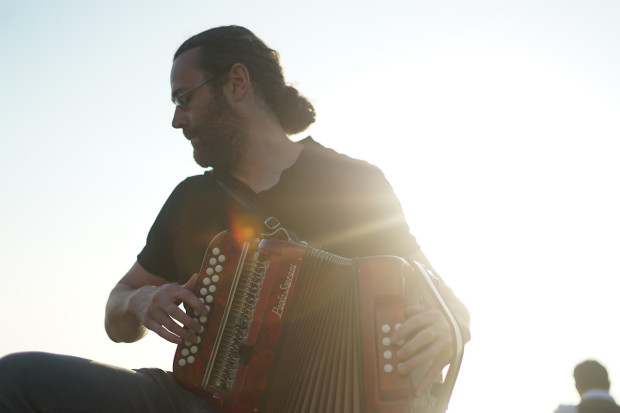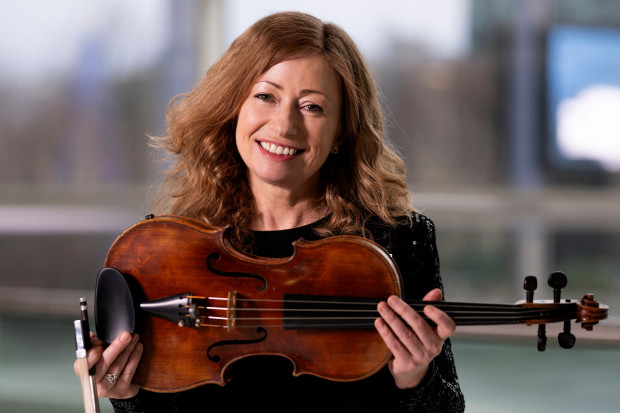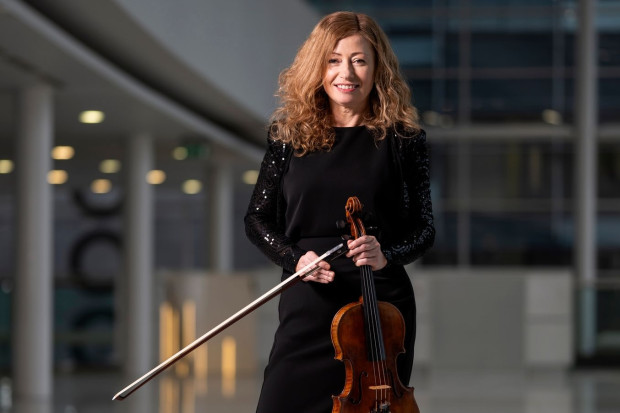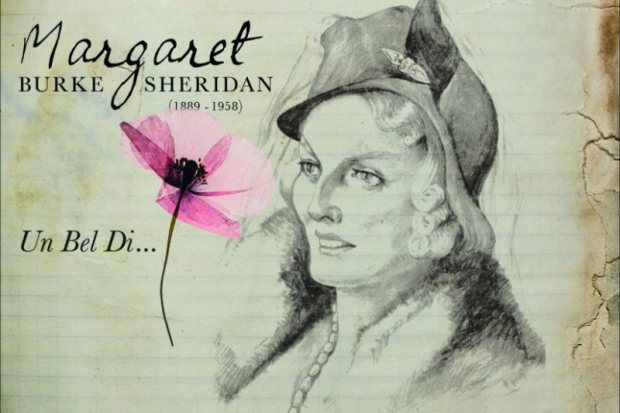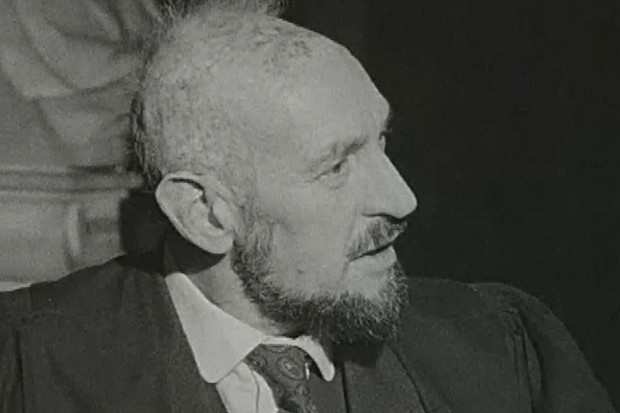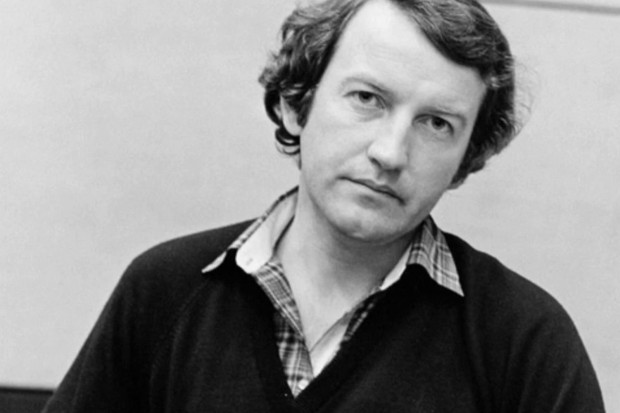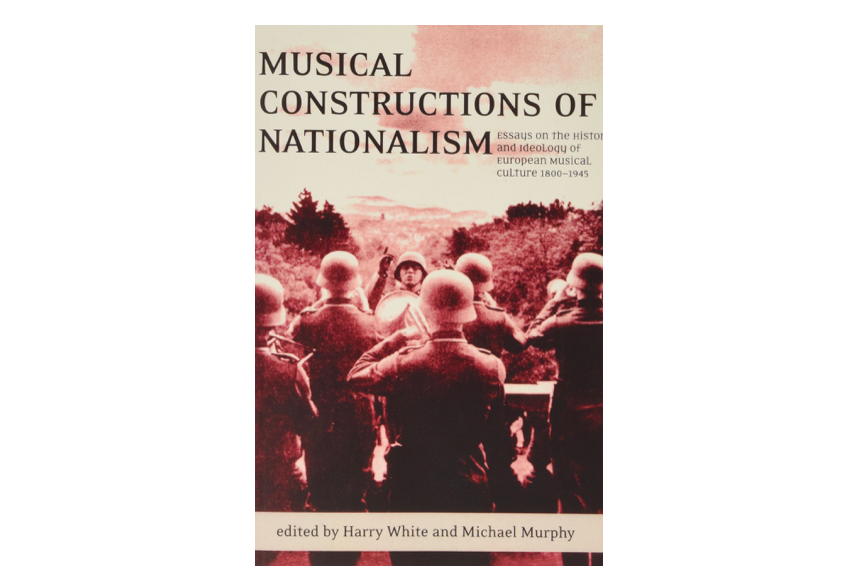
Music and Nationalism: Part 2
This is admittedly a rather unusual book review, not only by virtue of its length and being spread out over two issues, but also in its disproportionately extensive discussion of the contributions dealing with Ireland. The Editor has kindly sanctioned such a departure from normal practice on account of the fact that these contributions, occupying themselves as they do with a matter that many of us deem of the utmost importance, might prove of particular interest to readers of the JMI. Having dealt in the last instalment with the work of Joseph Ryan, I propose to continue with a discussion of the essay by ‘Harry White, ‘Nationalism, Colonialism and the Cultural Stasis of Music in Ireland’. This is a particularly forceful but highly condensed expression of White’s views. In order, therefore, to create a context for a reader who may not be familiar with his work, I have found it necessary to make reference to his other writings – in particular, to his book The Keeper’s Recital: Music and Cultural History in Ireland, 1770-1970 – where he has had leisure to expand his arguments at greater length and to which this present essay may be regarded as a companion piece.
Central to White’s preoccupations is his contention that one can without exaggeration speak of an intellectual void in Irish cultural discourse as far as music is concerned. In The Keeper’s Recital, he formulates the position thus:
The neglect of music in the reanimation of ideas which have so transformed our comprehension of the Irish mind within the last twenty years must rank as an outstanding failure of Irish cultural history. It is a failure not easily explained, although it has been borne almost without demur. […] The conspicuous absence of music from this discourse impoverishes our understanding of Ireland, of music in Ireland and of Irish music in European culture. This impoverishment […] reflects […] the marginalisation of music in Ireland […].[1]
On the surface, this passage would seem to suggest that Irish composers who have produced interesting work have been inexplicably and unjustly overlooked by commentators, in which case one could certainly speak of an ‘outstanding failure of Irish cultural history’. However, all the explanations that White offers for the absence of discourse about music imply that for one reason or another, which I shall presently detail, there was in fact no work of any significance written. In this case, the neglect of music by cultural historians is thus wholly understandable: there was, and is, nothing to write about. Logically, the only function of a commentator under such circumstances is to explain how this situation came into being. This, it would appear, is how White views his enterprise.
In White’s portrayal, the history of Irish composition is a cheerless chronicle of mediocrity, sterility and failure. Clearly, as far as he is concerned, there has been no Irish composition worthy of serious attention. As a consequence, he is led to resort to some very curious strategies in his narrative. For example, in the last chapter of The Keeper’s Recital, which deals with the modern period, White cannot altogether ignore the work of composers such as Victory, Boydell, Wilson, Bodley, Kinsella and Potter. He certainly pays lip-service to what he describes as the ‘vital contribution’ they have made to the history of Irish music – but only in a footnote, where he goes on to insist that ‘this contribution must be distinguished from the cultural [emphasis in the original] history of music in Ireland’.[2] It is very difficult to understand what White is seeking to convey in making such a distinction and this statement is nothing if not odd. If White is suggesting that these composers have not heretofore been generally considered a part of Irish cultural history, he is probably right, given the absence of any discussion of their work in the standard histories. But surely in relegating these composers to a mere mention in a footnote he is perpetuating their marginalisation – indeed, actively conspiring in it. One also wonders on what grounds White could justify with such apparent assurance the exclusion of the composition, performance and reception of their music from the cultural life of the country. He allows that it may have had an internal history of its own – but it is not deemed to make cultural history. What unarticulated value judgement concerning the music of these composers underlies such a contention? Is it simply not significant enough an achievement in White’s view to merit inclusion in cultural histories such as his? In any case, whatever he understands by it himself, this disclaimer certainly allows him to devote most of this chapter to a discussion of the career of Seán Ó Riada, who is presented as a paradigm case of artistic failure which is perfectly in keeping with the unrelievedly bleak context created by the preceding chapters, all of which emphasise the negative aspects of Irish musical life to the virtual exclusion of any positive ones – which is necessary if White is to sustain his thesis. To pass over in silence the work of Ó Riada’s predecessors and contemporaries, many of whom have extensive outputs and who have an equal if not greater claim to our attention than Ó Riada on this ground alone, results in a picture of Irish composition which is utterly unbalanced and misleading.
It is indeed nothing short of extraordinary that Irish composition continues by and large to receive no sustained and considered critical attention and must perforce content itself with the dubious ‘honour of non-existence’, in a memorable formulation of the composer Raymond Deane – and this, despite the fact that the number of composers at work in Ireland has increased steadily since the foundation of the Free State. There are at present thousands of scores housed in the Contemporary Music Centre, which is by no means the sum total of what has been written. But a major new work, even by a senior figure, is likely to receive no more than a perfunctory notice in the newspapers, so little comment does Irish composition attract.
The onus is on White to account for this remarkable state of affairs. He offers two principal explanations, which I shall attempt to summarise here. The first is, in his view, intimately bound up with our colonial past. Like Ryan – for whose work White has expressed admiration – he alleges that nationalist ideologies were deeply inimical to the development of music in Ireland. According to White, the art music tradition here was ‘vulnerable’ to the claims of ideology in a manner wholly unique to this country: ‘In Ireland, music could not survive as an independent entity, so deeply was it indentured to political and cultural propaganda’.[3] If Thomas Moore ‘took the intimacy between music and politics in Ireland virtually as a donné’, ‘those who followed him took it to be a requirement’[4] – with the result that ‘the dominant claims of nationalism […] decisively eclipse[d] the cultivation of music for its own sake’.[5]
An ‘irreducibly nationalist aesthetic’ was imposed on ‘[Irish] music itself, and above all on the corpus of ethnic melody’.[6] Certain kinds of Irish music came to be perceived as ‘the absolute expression of nationalist feeling, aesthetics and culture’.[7]
Further, art music in Ireland, he asserts, which was a minority interest in any case, was further subject to deep misprision as it was associated firmly in the minds of many Irish people with the culture of a colonial oppressor and was thus perceived as ‘the polarised manifestation of colonial difference’.[8] In White’s own words:
[T]he weak and increasingly untenable foundations of colonial thought made of the European aesthetic a second-hand experience, mediated through the harsh tonalities of foreign occupation and social dysfunction.[9]
White not only contends that any notion of art being created and appreciated solely for art’s sake was unrealistic here, but goes so far as to claim that the prevailing cultural and intellectual climate in Ireland was so hostile to any genuine creativity worthy of the name as to render the production of so-called ‘autonomous’ works of art – his term, following the musicologist Lydia Goehr, to describe works of art created allegedly free from ideological considerations – an impossibility. Accordingly, such music as was written in Ireland ‘lapsed into mediocrity’[10] – a rather curious statement, considering that there was little in the way of a strong tradition to lapse from – as art music, caught between the ‘claims and counterclaims of nationalism and colonialism’, ‘collapsed inwards under the weight of ideological pressure from both sides’.[11] He concludes his essay with the sombre declaration that ‘[i]n this strange climate and in this strange country, music itself fell silent’.[12]
White’s work, in my opinion, is riven with serious flaws – flaws of a sufficient magnitude unfortunately to call into question the validity of much of his enterprise. I have already indicated my reservation that there are too many lacunae in his narrative – too much is left out of account and unexplained. However, an equally serious reservation is, quite simply, that he provides little adequate support for any of his arguments, which proceed too frequently in abstractions and sweeping generalisations. In the absence of such detailed research as I described in the first part of this review, a study like The Keeper’s Recital and its associated articles might be seen as premature in what they set out to accomplish. White’s work on Irish music lacks the persuasiveness and authority that derive from the accumulation of meticulously researched detail and from careful reasoned argument.
Nobody would seek to deny that questions of cultural and political allegiance did impinge on the development of an art music tradition in Ireland to some extent. The question is however is whether their influence was as pervasive and as inhibiting as White would have us believe and whether they are responsible for the retarded development of an indigenous tradition to a greater extent than are economic and social factors. I strongly suspect that White may have over-dramatised and over-emphasised the allegedly detrimental impact of cultural politics at the expense of the latter. Certainly, to speak of music in Ireland being ‘unable to survive as an independent entity, so deeply was it indentured to cultural and political propaganda’ is an extraordinary statement. Someone from outside Ireland reading such a pronouncement might imagine that Irish composers worked under the expectation of producing compositions such as their counterparts in the Soviet Union felt constrained to write – paeans of praise to de Valera or odes in celebration of the Shannon Scheme, perhaps. There is nothing of this nature to be found in the work of Irish composers. One wonders what exactly White can be thinking of. Nor was there compulsion from officialdom to compose in any particular way deemed to be ideologically acceptable that could conceivably justify the picture of intolerance towards artistic freedom of expression that White seeks to create. The work of Irish composers may have been met on occasion with indifference, but was never anathematised on ideological grounds.
There is much else one might take issue with in White’s discussion. It is surely also highly questionable to allege without any qualification that an ‘irreducibly nationalist aesthetic was imposed on [Irish] music and in particular on the corpus of ethnic melody’ and that art music was held in disesteem as a reminder of an alien colonial presence. White would seem to suggest that music was seen to be valid here only insofar as it enhanced nationalist political propaganda – and the music that did this best was folk music. Nationalist symphonies which might have been written with the same intention could only fail, as symphonies in themselves were associated with an alien aesthetic and colonialism. Such views are simplistic in their failure to acknowledge the byzantine complexities of mixed cultural and political allegiances that prevailed in Ireland. Again, since so little research has been done in this area it is impossible to pass judgement with any sense of finality on White’s portrayal, but I suspect that if allegiances in literature and politics were of such a complexity, then such questions of cultural allegiance as far as music was concerned were most likely equally so and that a far wider spectrum of attitudes would have prevailed than White would allow.
As if this explanation were not enough, White goes on to advance a second, diagnosing a fundamental national trait of character, as it were, in the Irish, which is ultimately responsible for our lack of aptitude for art music. Ours, he asserts, is an ‘essentially verbal’13 culture. We are at bottom uninterested in music for its own sake and care more for language and literature. Irish writers and political figures, White claims, saw music either as a suitable vehicle for political sentiment or deployed it as a symbol for literary or propagandistic purposes. In White’s own words, ‘[…] The metaphorical status of “Irish music” almost always eclipses the actual condition of the music itself’[14], resulting in a diminution of the cultural importance of music as this ‘essentially verbal culture […] had overtaken the symbolic properties of music at the expense of music itself’.[15] White’s principal support for this distinctly odd thesis is to appeal to the appropriation of folk tunes for the ballads of Thomas Davis and to the fact that Yeats was supposedly ‘hostile’[16], in White’s word, to music, which White chooses to construe as a ‘radical duplicity’, since the poet simultaneously ‘saturate[d] his poetry and plays with musical symbolism’[17]. Yeats’ notorious tone-deafness is somehow symbolic, one infers, of a wider cultural indifference to the art. Leaving aside the rather strange charge of ‘radical duplicity’, White’s account of Yeats’ attitude to music is misleading. Yeats was in fact intensely interested in music, admittedly for the most part only in its expressive possibilities as an adjunct to his plays, but interested nonetheless, as Edward Malins shows in his monograph Yeats and Music.[18] And to single out Yeats rather than mention say, Shaw, Edward Martyn or George Moore, all well-known for their interest in music, is curious and further evidence of White’s unacceptably selective choice of corroborative detail.
This line of argument leads White to conclude that, ultimately, the reason the Irish have so little interest in music is because they use language in such a musical manner. The sensuous rhythms and sonorities of Irish poetry usurp that expressivity singular to music and such slender musical talent as we possess is displayed to its best advantage in the work of poets such as Seamus Heaney. In White’s own words:
In Heaney, language has so completely absorbed music that music itself becomes redundant. Any one of the ten Glanmore sonnets from Field Work (1979), is so intensely musical in its preoccupation with the sound of language that language itself becomes a substitute for music. And in that progression there are implications for the condition of music in Ireland [italics mine]. […] What need of Irish music then?[19]
The eccentricity of such a contention surely disqualifies it from any serious consideration and I doubt if many readers will lend much credence to the notion that through some quirk in our collective make-up poetic creativity is favoured to the detriment of musical creativity. Statements such as these are open to the charge of being intellectually lax to an inadmissible degree and serving only to create new fictions and mythologies about music in Ireland instead of offering genuine explanations rooted in incontrovertible fact.
From the title given to this collection – Musical Constructions of Nationalism – one would imagine that the principal aim of the writers would be to explore the complex constellation of attitudes, understandings and emotional responses of those involved with music regarding questions of cultural and political nationalism and subject this to disciplined critical scrutiny, ‘deconstructing’ the constructs they encounter if misleading and revising them radically should they distort or omit crucial facts. In my view, Harry White has done little more in his work on Irish music – of which this essay can be regarded as an epitome – than create a new and highly misleading construct which makes the undertaking of thorough scholarly study of Irish art music a matter of urgency. The construct White offers is of an overwhelming negativity: a people fundamentally uninterested in music for its own sake and composers who were talentless mediocrities, embroiled in an ill-starred cultural politics. How else are we to understand White’s contention that ‘music fell silent’ here? This statement is surely remarkable in its apparent disregard of the three thousand and more scores by Irish composers housed in the Contemporary Music Centre. Given omissions of this magnitude, it is hard to imagine how an uninformed reader of White’s work could take away any other impression of the circumstances of Irish musical life. This construct is achieved though the omission of any mention of positive achievement – which there unquestionably has been. In other words, ironically, White is himself culpable of perpetuating the same critical neglect regarding Irish music for which he castigates cultural historians at the opening of The Keeper’s Recital. Such is the paradoxical nature of his enterprise.
As in most collections of this nature, the other essays in Musical Constructions of Nationalism vary widely in quality and intrinsic interest. A scrupulous and thorough reconsideration of the principal confluences of musical creativity and nationalist ideologies would certainly be timely and pertinent. A necessary and equally valuable preliminary to such work would be a critical discussion of the possible pitfalls of such a proceeding, not least of which are the enormous philosophical difficulties raised in writing about what pieces of music supposedly ‘mean’ – or even more problematically, in the various claims made that ideologies are somehow encoded in musical compositions and that this can be demonstrated. The questions raised by such contentions are of a high order of complexity and in the worst of the so-called ‘New Musicology’ which seems content to proceed blithely without considering them, the result is often grotesque farce rather than serious scholarship. One thinks of claims such as Susan McClary’s that Beethoven was fantasising about rape in his Ninth Symphony or claims that composers’ sexual preferences can be discerned from the musical fabric of their work – in their management of key relationships, for example20. It is only in an intellectual climate such as postmodernism where a fundamental confusion seems to reign about the very nature and function of scholarship that such writing could be taken seriously. The unexamined assumptions of this kind that permeate modern musicological writing would make the subject of a most interesting book in itself.
As an example in the volume under discussion we have an essay by Stephen Downes called ‘Eros and Paneuropeanism: Szymanowski’s Utopian Vision’, in which the author does his best to persuade us that Szymanowski was attempting to present a subversive subtext in his opera King Roger, which was in Downes’ view a distinctly novel and potent blend of homoeroticism and pacifism. Bluntly put, if men could acknowledge their repressed (or not so repressed, as the case may be) homosexual attractions to one another, they would make love rather than war. One wishes matters were so simple. There is much earnest quotation from Freud regarding Eros adduced to bolster his contention – as if an appeal to Freud for legitimisation of an argument were completely unproblematic and the explanations of human conduct offered by psycho-analysis were incontrovertible. Downes attempts to make a case for Szymanowski to be seen as an internationalist of the same ilk as say, Stefan Zweig. He goes on to claim that in Szymanowski’s art, the subversion of taboos regarding a culturally illicit sexual preference is intimately associated with his desire to break down cultural barriers – and this, we are to understand, is a direct consequence of being born in the part of eastern Europe that he was, with its complex ethnic mixtures and ever-shifting boundaries. I cannot refrain from quoting Downes’ fantastications on this theme:
The Szymanowski estate lay in south-east Ukraine, not far from the Black Sea. These are the ‘borderlands’ where delight in erotic ‘transgression’ went hand in hand with a powerful mingling of the West and East in which the boundary between subject and ‘other’ – the very essence of exoticism – was broken down. […] This is a region in whose history notions of ‘civilised centre’ and ‘barbaric periphery’, the power relations of ‘West’ and ‘East’, and binary oppositions of gender are all continually subverted. [!] In consequence artists from both Poland and Russia – whose territories run into this region – are presented with rather special challenges.[21]
This is sheerest fantasy. Contrary to Downes’ claims about subversions of power relations, this area was in fact notorious for its utter intolerance of the ‘Other’ – in the widely held anti-semitic and racist attitudes of many of its inhabitants since the Middle Ages. Readers might recall that even after the Jewish community in this area had been decimated in the Holocaust, such was the level of intolerance in Poland that Jews attempting to return there after World War II were subjected to further ugly attacks. Neither was it likely to have been anything like Downes’ fairy-tale paradise for bi-sexuals, who, we are presumably to understand from his description, populate this area in unusually large numbers. In any case, Szymanowski and his librettist Iwaszkiewicz do anything but suggest in King Roger that an unbridled satisfaction of the sexual impulse is a cure for all ills. On the contrary, they affirm the need to subdue the animal in man, as unfettered instinct unmodified by reason and empathy for one’s fellow creatures leads to egotistical self-indulgence, and ultimately, to anarchy, to the breakdown of social order. This is precisely what happens when some of Roger’s subjects follow the mysterious Shepherd. The opera ends with the dawning of a new day – the light of rational understanding overcomes the darkness of instinct, a realm where morality and questions of responsibility have no purchase. This is made explicit in the line given to Roger’s companion Edrisi, where he comments ‘Stargany lancuch zlud’ – ‘the chain of deceptions has snapped’. The word ‘zluda’ is variously translated as ‘illusion’, ‘delusion’, ‘deception’ or ‘fallacy’ and the metaphor of a chain surely implies a state of thraldom to such ‘delusions’: there can be little doubt what judgement is passed on the Shepherd and the consequences of his teaching.
If less obviously than Downes, the work of other contributors to this volume is marred by questionable assumptions which also raise this thorny question of how we can demarcate a valid reading from one which ‘reads into’ the music things which could not conceivably be demonstrated convincingly. Just as Harry White can declare that nationalism has a ‘substantive existence’[22] in the music of Chopin or that Irish music registers ‘in a definitive way the “soul of a nation”’[23] – though I am at a loss to know what convincing support could be offered for such claims – Daniel Grimley in his essay on Nielsen makes assertions that are similarly undisciplined. Space does not permit a thorough examination of them all, so I must content myself with quoting only a few of them. We are told that ‘[…] Nielsen is actively concerned with the construction of a collective Danish identity in his music’ – whatever that is – and how do we in fact know that this was Nielsen’s intention? Further, this ‘Danish identity’ is ‘associated with a state of extreme simplicity and sparseness’[25]. Grimley also tells us that in the work of Nielsen, ‘horn calls are associated […] with the uncovering of a more “real”, arcane Truth’[26] – however he can tell and whatever this ‘real’ Truth with a capital ‘T’ is, with which he must presumably be acquainted in order to recognise it when he encounters it – and that the climaxes of two Nielsen songs ‘represent the uncovering of a pure musical state that is distinctly Nordic in character’.[27] I do not pretend to know what a ‘pure musical state’ is either, Nordic in character or not. It is more than a little ironic that precisely these kinds of meaningless generalities about ‘collective identities’ were responsible for bringing nationalism itself into philosophical disrepute.
Of the remaining papers, the best are undoubtedly those of Kleiberg, Dibble, Frolova-Walker and Roselli. Ståle Kleiberg contributes a useful discussion of the work of the Norwegian composer David Monrad Johansen in the period when he attempted to forge an individual idiom and assimilate the effects of his encounter with the music of Debussy. Jeremy Dibble presents a most interesting account of how Grove’s Dictionary came into being, providing an outline of Grove’s aims and a sketch of the contributions of the writers whose assistance he enlisted in the venture. It is notable in its present context for being utterly unpretentious in its manner of writing, admirably lucid in its presentation and refreshingly free of jargon.
The excellent contributions of Martina Frolova-Walker and John Roselli serve to support my reservations concerning some discussions of the relationship between music and nationalist ideologies in their demonstration that musicologists themselves have been at fault as much as anyone else in imposing misleading constructions concerning nationalist agendas on the historical circumstances with which they engage – some of these based on fundamental errors of fact. Thus, Frolova-Walker in her consideration of constructs of ‘Russianness’ in discussions concerning nineteenth-century Russian symphonic writing deals most amusingly with claims by Russian composers themselves (such as Balakirev) and subsequently, also by musicologists about the degree of ‘authenticity’ of such ‘Russianness’. It seems that Russian composers at their most authentically ‘Russian’ were in fact at their most Schumannesque – faults and all. She writes devastatingly about Western musicologists such as David Brown and Gerald Abraham who traffic in such nonsense, quoting the latter for example on the subject of Glazunov, who in Abraham’s view ‘learnt to speak music with a Russian accent, but not to think musically in Russian’.[28] One also thinks of the many invidious comparisons made between Tchaikovsky and Mussorgsky which claim that the latter was the more truly ‘Russian’ composer. The negative evaluations of composers’ work offered by musicologists on such grounds are embarrassing in their intellectual slackness and ultimately, their unilluminating redundancy. Roselli surveys the relationship between political nationalism and operatic composition in nineteenth-century Italy. Once again, it seems, the scholars have got it wrong and Roselli challenges some of the legends that have grown up around the reception of the work of Verdi in particular – the locus classicus for historians to illustrate such a relationship between music and politics. It is surely salutary to remember that musicologists seem as wont to mythologise as are nationalist apologists.
Musical Constructions of Nationalism: Essays on the History and Ideology of European Musical Culture 1800-1945
Edited by Harry White and Michael Murphy, Cork University Press, 285 pp., 2001
ISBN 1-85918-153-8 (hbk), 1-85918-322-0 (pbk)
See part 1 of this review here.
Notes
1. Harry White, The Keeper’s Recital: Music and Cultural History in Ireland 1770-1970, Cork University Press, Cork, 1998, pp. 1-2. Hereafter WKR.
2. WKR, p. 199, n. 9
3. Harry White, ‘Nationalism, Colonialism and the Cultural Stasis of Music in Ireland’, in (ed. Michael Murphy and Harry White), Musical Constructions of Nationalism: Essays on the History and Ideology of European Culture 1800-1945, Cork University Press, Cork, 2001 (hereafter MCN), p. 259
4. MCN, p. 262-3
5. MCN, p. 269
6. MCN, p. 258
7. MCN, p. 257
8. MCN, p. 259
9. MCN, p. 269
10. Harry White, ‘Music and the Irish Literary Imagination’, in (ed. Gerard Gillen and Harry White), Irish Musical Studies 3: Music and Irish Cultural History, Dublin, 1995 (hereafter IMS3), p. 217
11. MCN, p. 259
12. MCN, p. 269
13. MCN, p. 269
14. MCN, p. 258
15. MCN, p. 269
16. MCN, p. 266
17. MCN, p. 266
18. Edward Malins, Yeats and Music, (No. XII of the Dolmen Press Yeats Centenary Papers), Dolmen Press, Dublin, 1968
19. Harry White, ‘Music and the Irish Literary Imagination’ in IMS3, p. 224
20. For a discussion of this, see the chapter ‘Music and Gender’ in Nicholas Cook, A Very Short Introduction to Music, Oxford University Press, Oxford, 1998
21. MCN, p. 57-8
22. MCN, p. 260
23. MCN, p. 257
24. MCN, p. 135
25. MCN, p. 134
26. MCN, p. 132
27. MCN, p. 132
28. MCN, p. 118
Published on 1 March 2002










